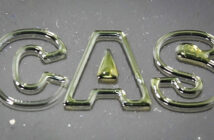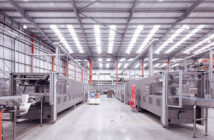At present, food packaging tends to get judged in terms of three criteria – the environment, marketing and functionality. Despite their continuous enhancement over a century or more, there is still a healthy flow of new developments and innovations. Top trends of the moment include smart packaging to protect the product, technology to conserve resources and the use of renewable materials.
Just over one-third of the food produced worldwide perishes before it ever reaches the consumer. In view of such statistics, it is easy to see what role packaging might play in conserving the planet’s resources.
One of the purposes of food packaging is to protect the contents against spoilage and damage, even under less than favourable storage and freight conditions.
In the absence of packaging, lots of foodstuffs would perish much faster, thus limiting their transportability and shelf life. Yet the production of packaging consumes both energy and raw materials.
This is one area where improvements in efficiency can be achieved.
By boosting energy efficiency and cutting the use of packaging materials, companies such as Bosch Packaging are looking to lower food production costs and thereby reduce the burden on the environment.
New approaches in this area include the use of aseptic packaging, a method that removes the requirement to heat the contents to a high temperature after packaging. This means not only a significant reduction in packaging materials, thus generating less waste, but also substantial energy savings of up to 70 percent compared with conventional packaging methods.
Furthermore, as a result of this more gentle form of processing, foods conserve many more of their nutrients. Equally important, for foods packaged this way there is no need to maintain an unbroken cold chain reaching all the way from production to transport to the retail trade. That significantly reduces energy consumption.
Similar trends can be observed in the packaging of chilled products. Smart labelling is a prime example. This includes Bizerba’s Time Temperature Indicator system, which enhances the inconclusive ‘best before’ date with an indication of a product’s actual freshness based on its real conditions of storage and transportation.
Such technology should significantly reduce the amount of food that gets thrown away simply on account of having exceeded its stipulated shelf life.
At the same time, the technology provides conclusive evidence of product freshness as well as a record of any gaps in the cold chain resulting from, for example, a faulty cooler unit in a refrigeration truck.




























































































